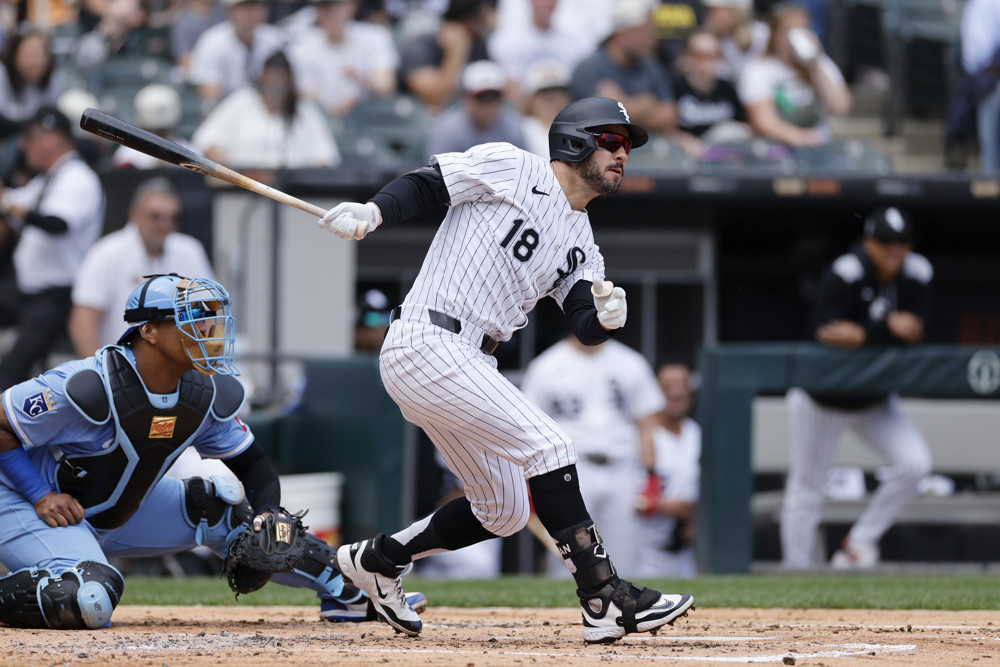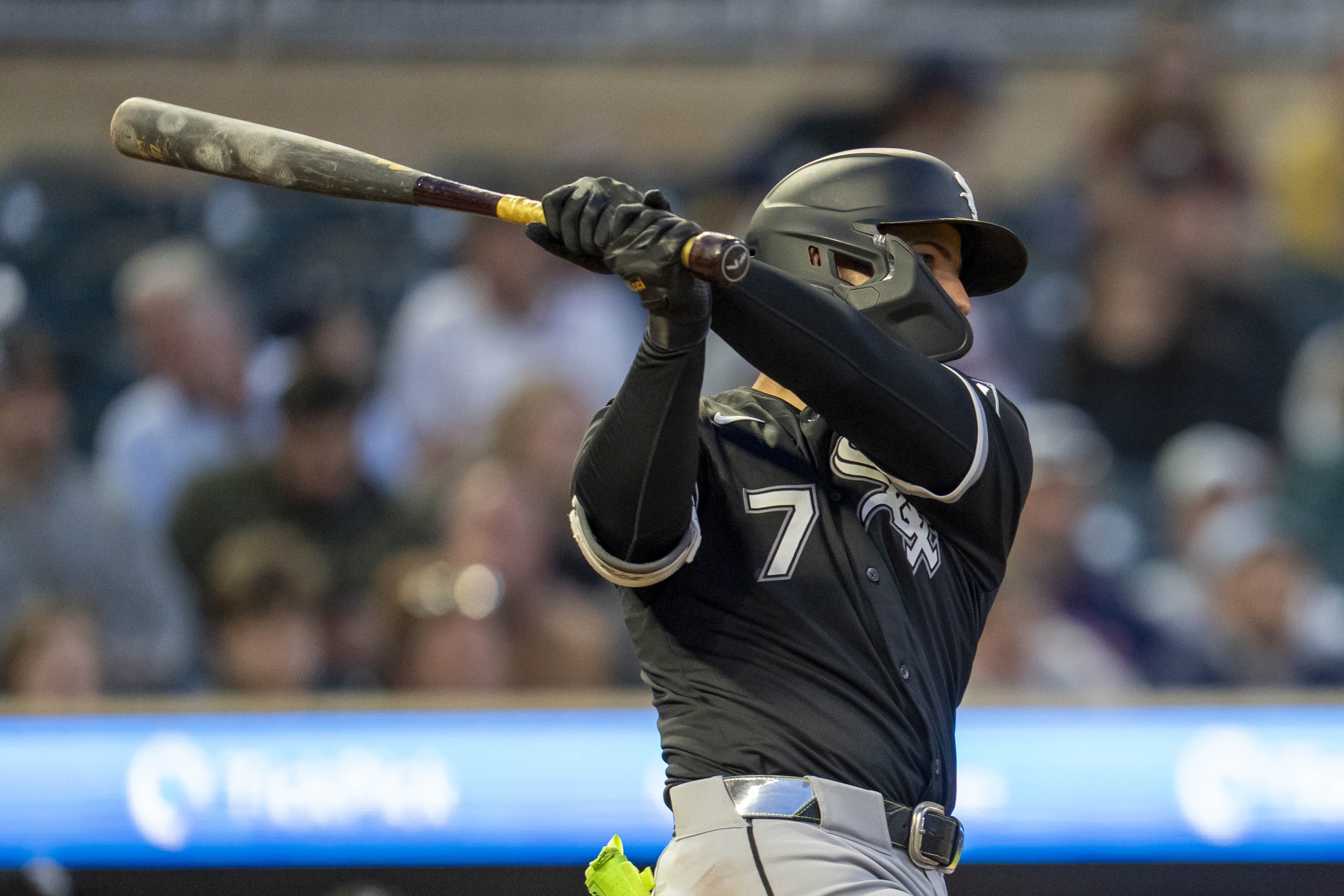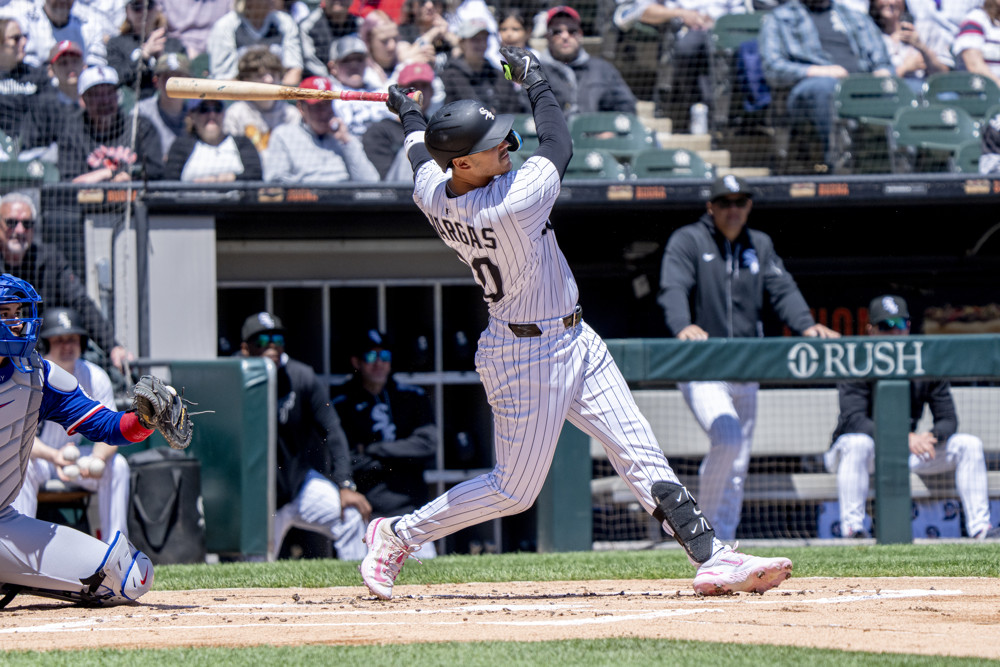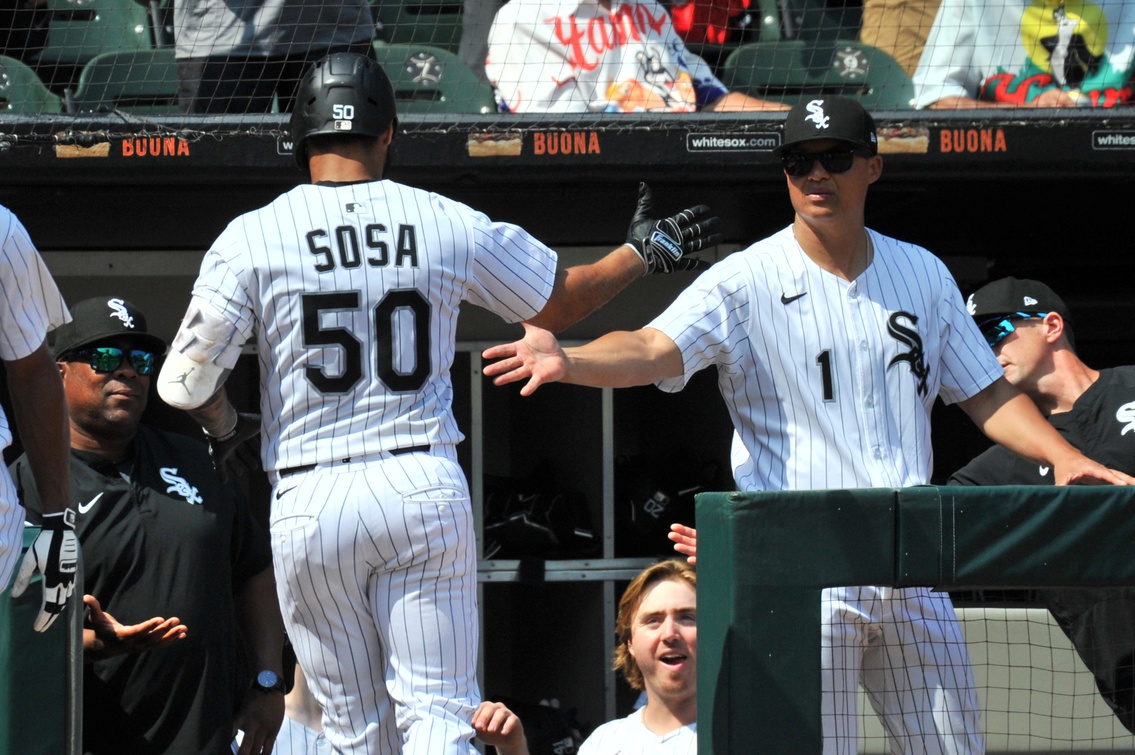The White Sox front office could argue that their free agent pursuits this past offseason were carried out with intention, but the dollar figures didn't suggest ambition.
Their biggest outlays were for a yeoman innings-eater who sometimes doesn't break 90 mph and a glove-first infielder who doesn't play shortstop, and between injury and underperformance, neither have produced to expectations.
Still, buried within the under-$2 million AAV tier that accounted for most of their offseason activity was a little experiment. In the process of self-review that involved the Sox trimming their traditional pro scouting staff and establishing a new department of acquisition, one of the takeaways that emerged was that the club had traditionally overrated corner bats, particularly right-handed ones.
Their efforts to pivot to a new approach is evident enough in cutting ties with Gavin Sheets and Andrew Vaughn over the last nine months' time, and a 2025 draft focused on up-the-middle talent. But the biggest contract in franchise history still belongs to a left fielder, and we're 10 years removed from Melky Cabrera and Adam LaRoche being the the biggest salary additions aimed at pulling out of a different undercooked rebuild.
Having experienced a healthy dose of how sharply the bottom can fall out of investments in players who must mash to have value, the Sox wanted to see if they could match or beat their previous efforts while attacking a hole in right field with low-cost platoon options.
So far, after signing Mike Tauchman, Austin Slater and Michael A. Taylor for less than $6 million in 2025 salary combined, FanGraphs' wins above replacement, White Sox right fielders have combined for 0.6 fWAR, and a 99 wRC+. If that doesn't sound great, it's because it isn't: it's tied for 19th in MLB.
Looking at everyone who has received more than 20 plate appearances in right field, the issue is clear enough.
| White Sox Right Fielders | PA | wRC+ | fWAR |
|---|---|---|---|
| Mike Tauchman | 158 | 138 | 1.0 |
| Brooks Baldwin | 21 | 148 | 0.2 |
| Austin Slater | 54 | 105 | 0.1 |
| Michael A. Taylor | 63 | 48 | 0.0 |
| Joshua Palacios | 104 | 71 | -0.5 |
Baldwin's offensive outbursts being concentrated to his work here is countered by his struggles in left, where he's accumulated -1 fWAR in just 23 games. Combine that with Andrew Benintendi's very striking offensive splits (73 wRC+ as a left fielder, 137 wRC+ as a DH), and Sox production for the other outfield corner spot is as bad as ever (-1.2 fWAR, worst in AL).
Having to turn Palacios from a waiver claim into a regular for ~six weeks is very much baked into the risk of signing a cadre of players in their 30s to hold down a position group still lacking in upper-level depth. But with him out of the mix, and Taylor hitting better than this split on balance while providing center field depth, this is looking passable; in the least glamorous sense of the term.
Historically, passable has been hard to come by around these parts.
Names are arranged in order of playing time. You can probably piece together why the offensive output and total value don't line up in '22 by the names involved.
| Years | Primary Right Fielders | wRC+ | fWAR |
|---|---|---|---|
| 2025 | Tauchman/Palacios/Slater | 99 | 0.6 |
| 2024 | Sheets/Fletcher/Pham | 68 | -2.1 |
| 2023 | Colás/Sheets | 67 | -2.2 |
| 2022 | Sheets/Vaughn/Engel | 104 | 0.1 |
| 2021 | Eaton/Goodwin/L. García | 84 | -0.5 |
| 2020 | Mazara/Engel | 67 | 0.2 |
| 2019 | Cordell/L. García/Jay | 52 | -2.6 |
| 2018 | A. García/Palka | 88 | 0.0 |
| 2017 | A. García | 122 | 3.6 |
Since the passing comet of Avisaíl García's All-Star campaign -- and the mercurial nature of his year-to-year production only buttresses the argument that single-player solutions to this position are a rare class -- the only real consistency has been misery. But the White Sox picked a specific through-line on which to direct their focus.
Sacrificing defense in pursuit of offense exposed them to devastating lows, and was self-defeating enough that Sheets and Vaughn piecing together typical right field production with their bats in '22 had minimal value. That they came close to their current production in '20 is a credit to the value of rostering an Adam Engel-level defender, not the primary option they invested in, and Colás' poor defense made it all the more untenable to give his struggling bat more runway.
In signing Tauchman, Taylor and Slater -- and trading for Fletcher and Zach DeLoach before the 2024 season was a clearly less successful version of the same methodology -- the Sox tried to insulate themselves from the deepest lows by filling their mix with capable defenders. Palacios was also the laggard of the group in this regard as well, but for the first time in a few years, there are contributors worth retaining.
With another year of arbitration eligibility in hand and his own preference to stay put in Chicago, the White Sox are actually disinclined to trade Tauchman at Thursday's trade deadline unless the offers are truly substantial -- especially since their plaudits for the veteran outfielder go beyond him offering the best statistical performance of this mix.
"Huge impact," said Will Venable. "Obviously, the results on the field speak for themselves, but he's a guy that's vocal in meetings, vocal in the clubhouse, vocal in the dugout, sets a high expectation, holds himself to a high expectation and holds the people around him accountable. He's kind of like another coach out there, another veteran leader that everyone depends on."
But Slater's reliable brand on lefty-mashing has the White Sox expecting him to wind up as a last-minute supplemental addition for a contender, and along with Taylor, all of these were veteran role players who were in career positions that made them amenable to small one-year deals. This was never a player mix built to last, but possibly a template for cheaply addressing future corner vacancies without the bottom falling out.
With the decided lack of progress for non-Braden Montgomery White Sox outfield prospects, this is likely the path for filling out the 2026 outfield as well, so the formula is better off being tweaked than junked. Even though the Sox claim to be willing to pick up Luis Robert Jr.'s 2026 team option, the budget likely isn't going up to any paradigm-shifting degree.
Obviously, the recent White Sox efforts to solve right field were pinched by budget constraints too, even when there was a real need to make the solution look contention-ready. But if the almost intentionally bargain-basement approach produced their most suitable performance in years, that's a lesson worth retaining even when the Sox return to building things meant to last through October.






